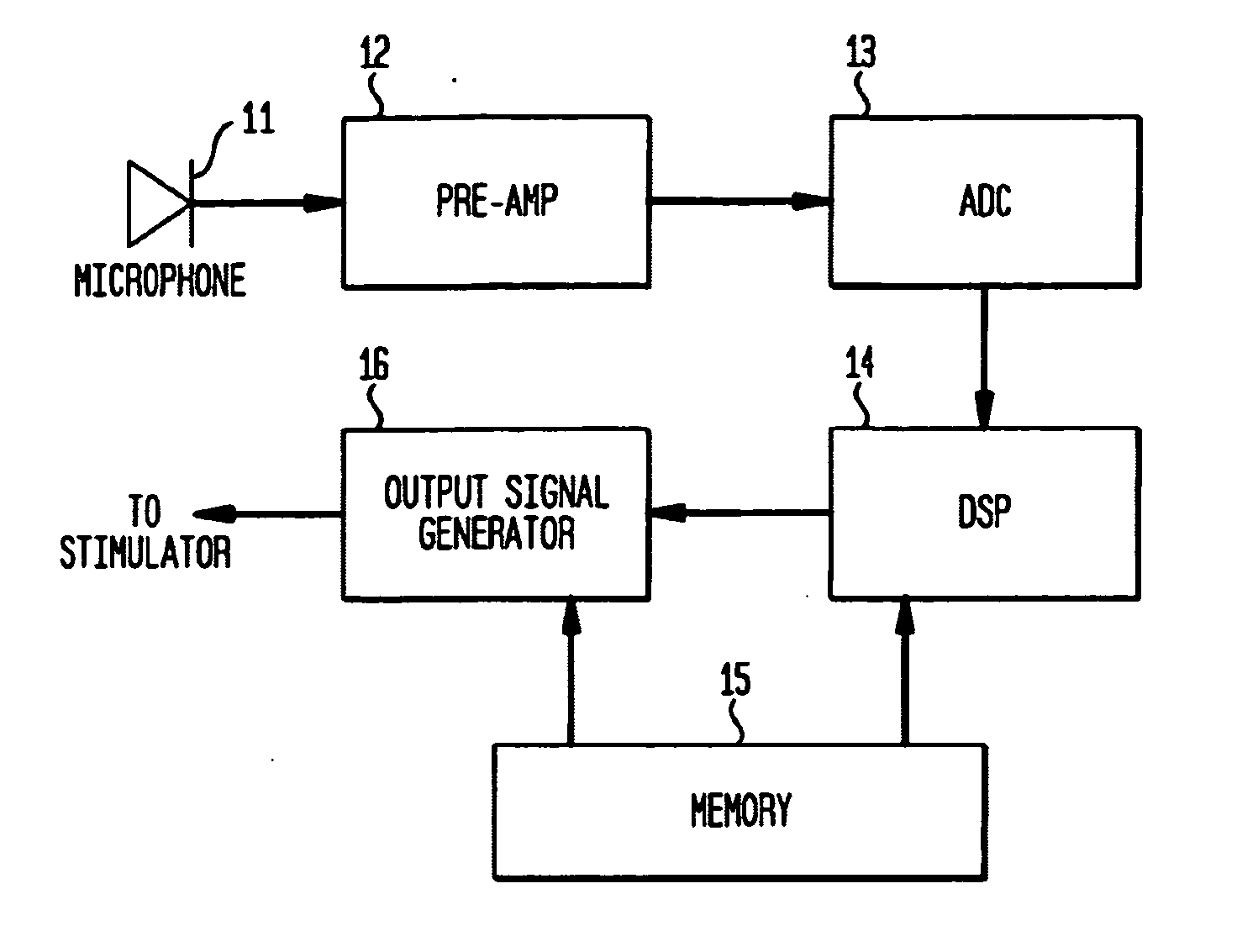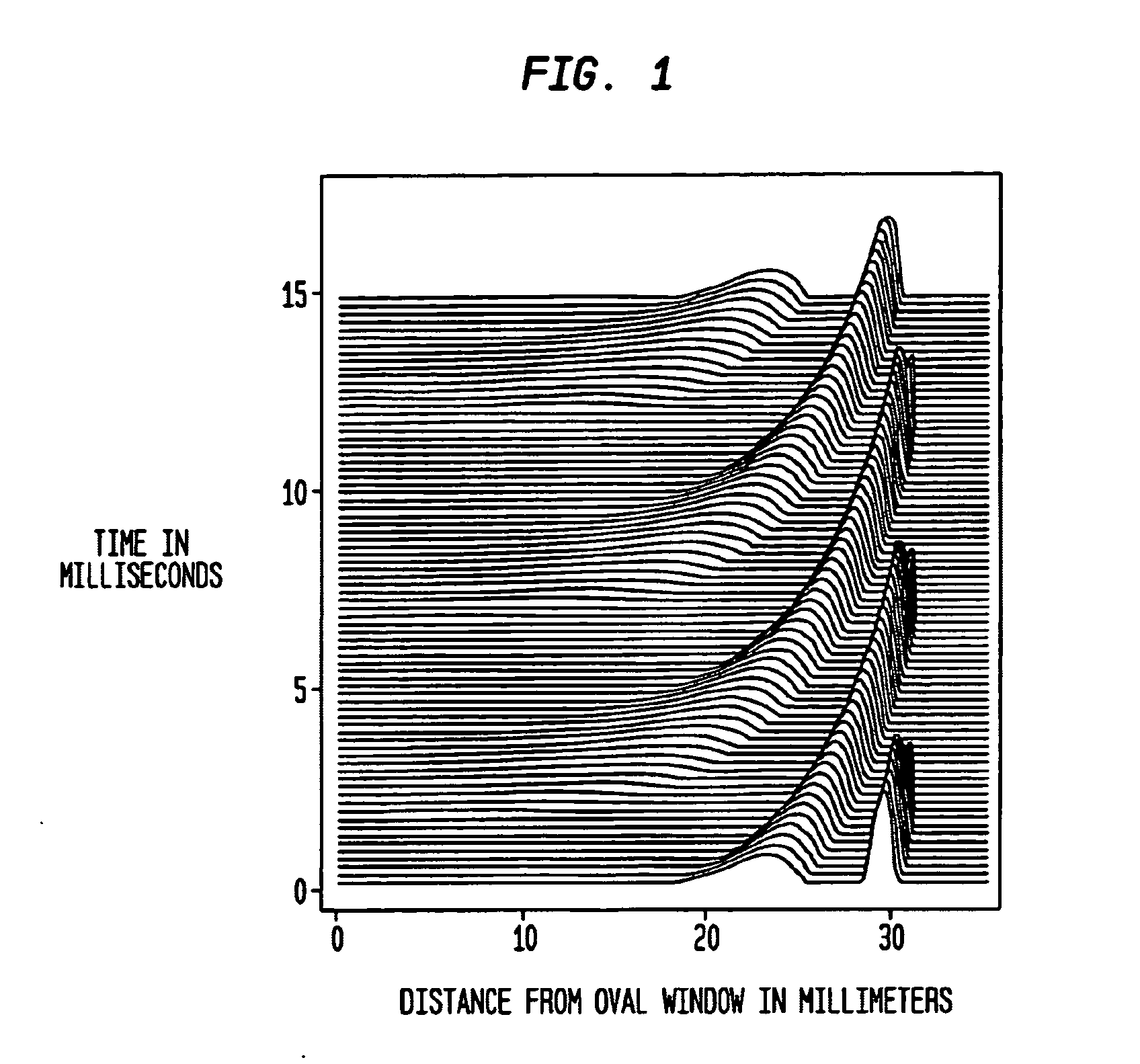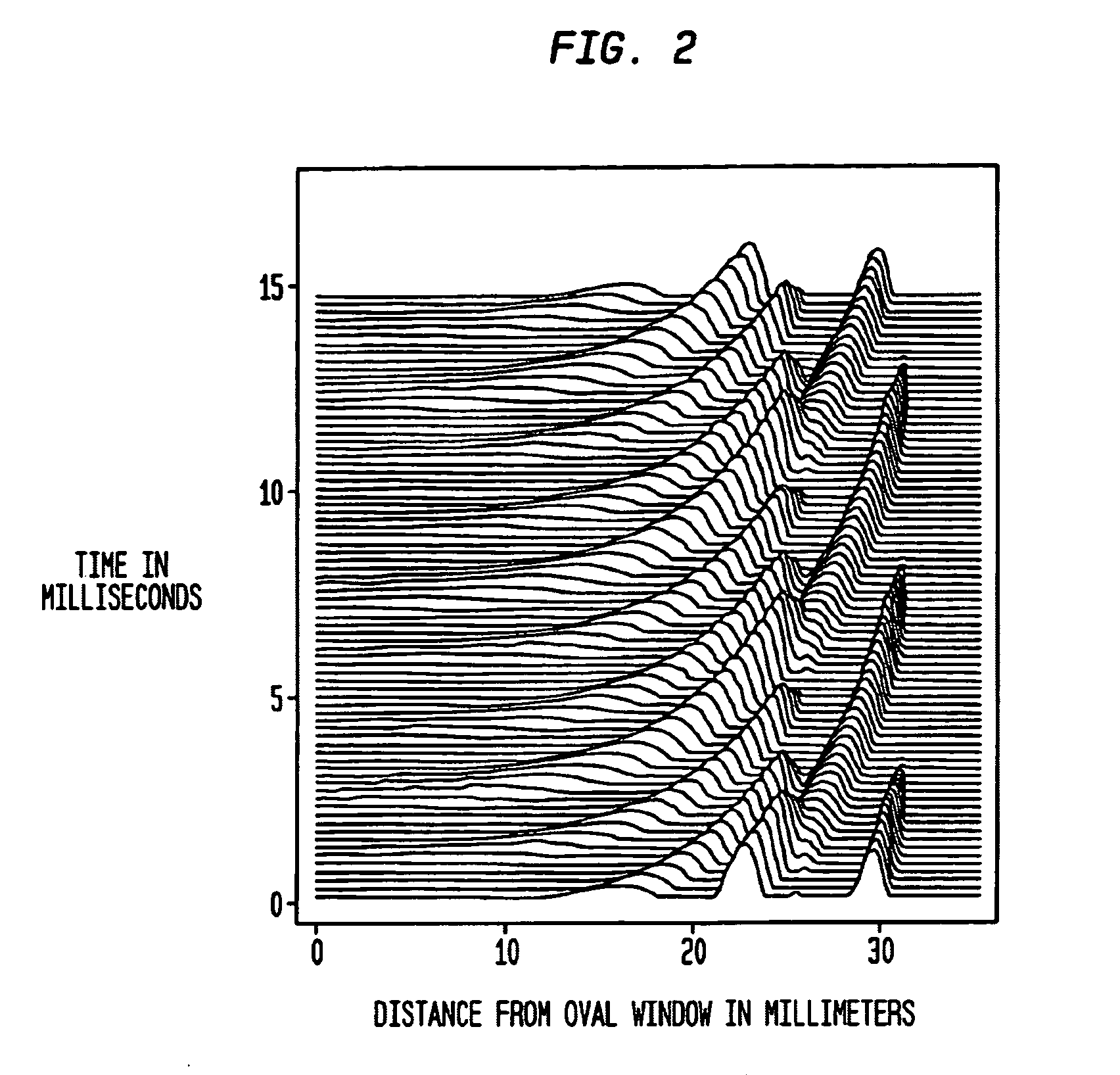Sound processor for a cochlear implant
a cochlear implant and cochlear implant technology, applied in the field of cochlear implants, can solve the problems of poor speech perception in noise at low signal-to-noise ratio, significant outstanding problems, and poor frequency resolution and discrimination
- Summary
- Abstract
- Description
- Claims
- Application Information
AI Technical Summary
Benefits of technology
Problems solved by technology
Method used
Image
Examples
Embodiment Construction
[0024] The present invention will be described with reference to the hardware implementation used by the applicant, using an Implanted receiver / stimulator unit and an external speech processor and microphone. However, the present invention is of broad scope and can be implemented on any sufficiently sophisticated cochlear implant system. In particular, it is anticipated that the present invention will be able to be implemented more fully and in more detail on future generations of cochlear implants, with increased processing power and flexibility relative to the current state of the art. The present invention could also be implemented in a totally implanted device, or some intermediate stage between the present systems and a totally implanted device.
[0025] The essential difference between the invention described and previous implant coding schemes is that the importance of overlapping information across electrodes is recognized and a complex spatio-temporal pattern is produced. Thi...
PUM
 Login to View More
Login to View More Abstract
Description
Claims
Application Information
 Login to View More
Login to View More - R&D
- Intellectual Property
- Life Sciences
- Materials
- Tech Scout
- Unparalleled Data Quality
- Higher Quality Content
- 60% Fewer Hallucinations
Browse by: Latest US Patents, China's latest patents, Technical Efficacy Thesaurus, Application Domain, Technology Topic, Popular Technical Reports.
© 2025 PatSnap. All rights reserved.Legal|Privacy policy|Modern Slavery Act Transparency Statement|Sitemap|About US| Contact US: help@patsnap.com



